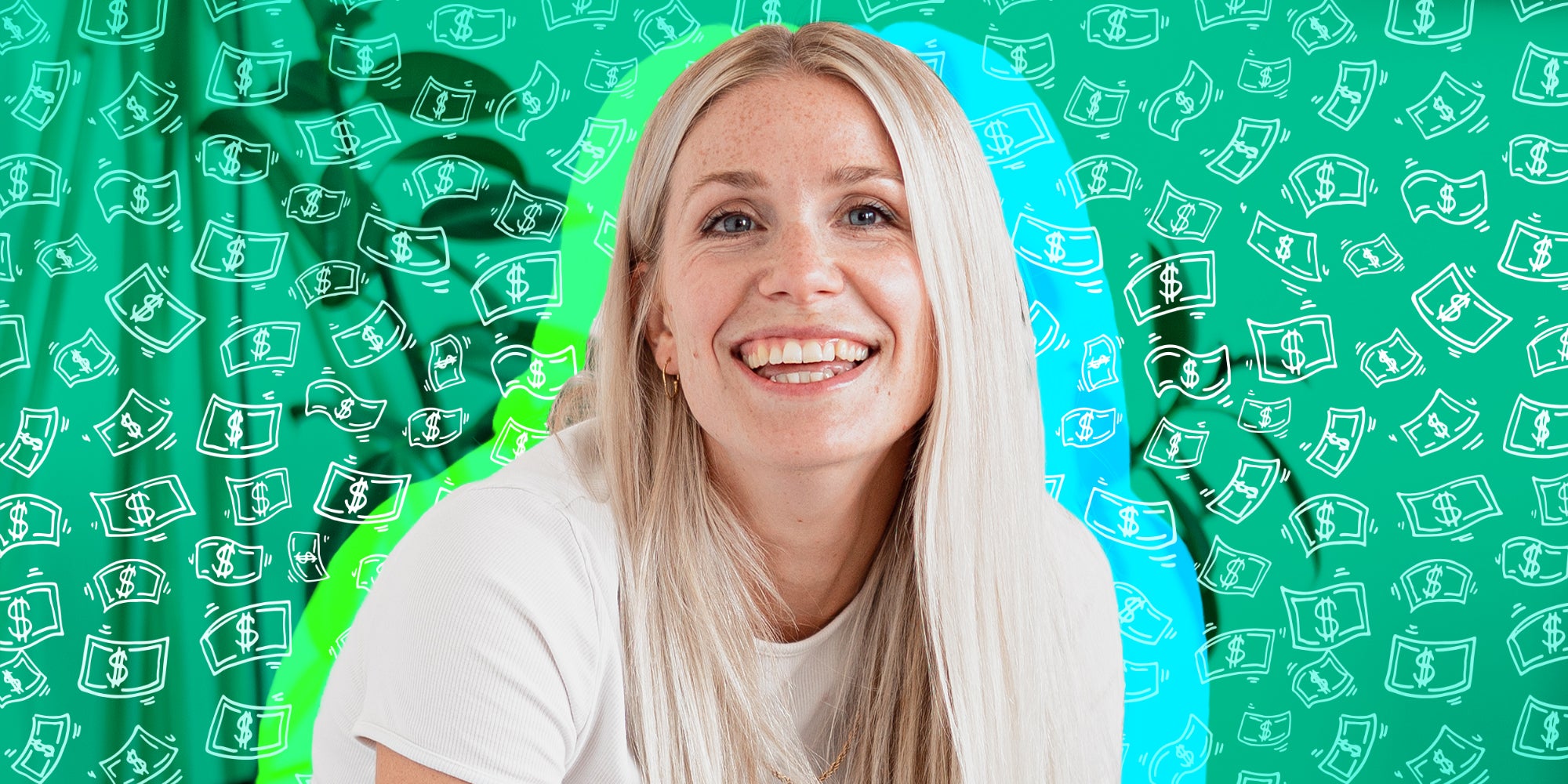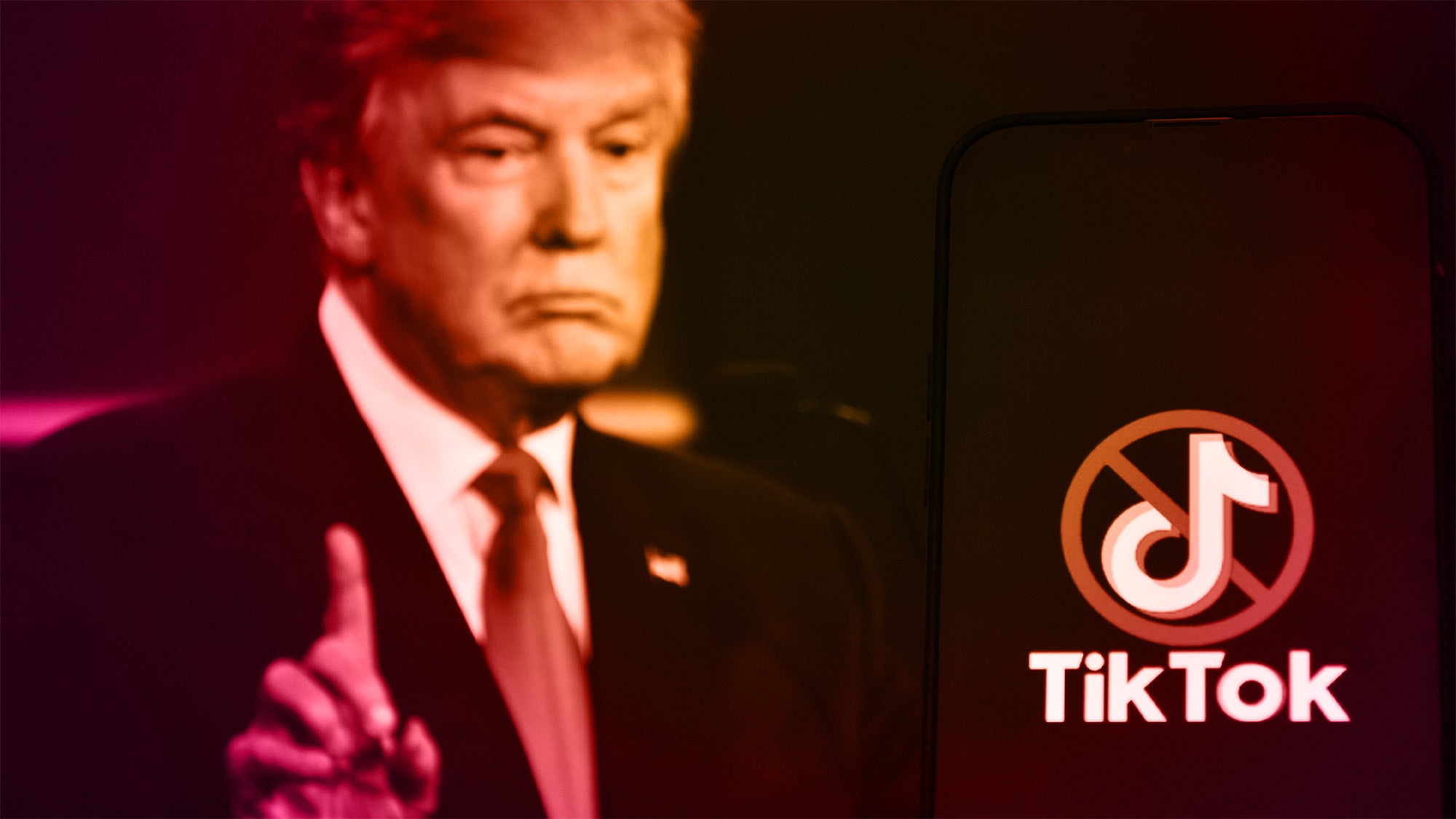
This as-told-to essay is based on a conversation with Anna Brading, a finance influencer on TikTok. The following has been edited for length and clarity.
I didn’t intentionally set out to be a finance influencer. I was a mom at home with three very young kids. High childcare costs made it tough for me to work full-time. So I started doing side hustles, like math tutoring. We felt stuck financially. That’s when I started my journey to level up my financial literacy. I became very passionate about the topic and became a Certified Financial Education Instructor.
In 2020 I posted my first four videos on TikTok in one day. The fourth video, which was about how tough it is to buy a house when you’re a millennial, got over 300,000 views. It gave me the confidence to keep posting. The mixture of me telling my personal stories and teaching easy-to-understand financial tips, seemed to resonate with people. I was able to grow my TikTok following to 170,000 in just two years.
Here’s how I was able to grow my platform as a TikTok finance influencer and earn six figures a year.
Focus on growing on one platform at a time
When I started out trying to be an influencer, I decided to pick one platform and spend my time growing an audience. I decided to go with TikTok because it was booming in 2020 and it had a lot of dynamic features. I also think it’s a platform that’s great for beginners because you can show up and experiment.
I usually put out five to ten videos a week. Some will get 2,000 views and others will hit millions of views. I’ll then end the week by analyzing why one performed well and another didn’t. Sometimes it’s impossible to know and other times it’s clear that the topic or editing of the video engaged the audience.
Optimizing based on these insights has helped me create quality content, which leads to engagement and more followers.
Decide on a niche but find a way to stand out
I know that there are a lot of other financial influencers on TikTok. However, I try to approach the niche by putting my own spin on the content.
Finance can be a very stiff and confusing topic. Yet everyone has to handle money every single day. That means avoiding using complicated jargon and using example illustrations and ideas that stick with people. I think my content resonates with people because they can learn about a topic that might not come naturally in an enjoyable and relatable way.
I’m always eager to test out new features on TikTok but I don’t always need to follow trends
I spend a lot of time scrolling on TikTok because I am really fascinated with the platform. It’s a social media app that’s always changing and evolving. As a creator, it’s important to lean into what’s new with the platform. Sometimes the TikTok algorithm will even reward you for testing out a new feature, like going live or posting photos.
While a lot of content creators rely on trends to help them grow, I haven’t found that strategy to always work for me. I think that for my audience and niche, it’s less about hopping onto a dance trend and more about communicating value in a very clear way.
Storytelling in your own voice allows the audience to connect with you
I want my content to be authentic. However, you won’t see me posting every detail of my life. I talk about my experience with finance but I don’t often talk about my family or hobbies. I think when it comes to money and finance tips, people need to trust you. Sharing real stories helps to connect with people and they can see I’m a real person and not some overnight millionaire success story.
To help me stick to the goal of being relatable and myself, I try to preach less and tell more stories. Often, I’ll share real personal stories about my journey so my audience can understand my point of view and connect with me.
I find that when the audience hears a story of somebody else’s journey of doing something, they can start to see themselves in the story. I like to start my videos by using the word “you” because when people hear this, they really think the video is for them. I also like to then add in personal context so the audience can understand my perspective and my journey.
For example, I’ll create a video on how you can save more money in 2024. I’ll start with a few tips and then share how I tried these tips myself and what the results were.
There’s no one right way to plan out content as a creator
I’m often changing my own methods for how I film, edit, and post content. Right now, I use Trello, an organization platform, to help me list out all of my ideas. I then spend five to ten hours a week writing out a script for each idea, filming the videos, and editing the content.
A new technique I have been testing out in my videos is mentioning other financial concepts and content. I’ll spend around two hours a week finding interesting articles, quotes, or videos from other financial experts.
I’ll then brainstorm how to incorporate these into my videos, whether by linking to those articles, or by summarizing the main points in my style.
To earn full-time income as a content creator you have to continue to scale
When I first started as an influencer, I had one source of income. I was earning a few hundred dollars a month through brand deals. I realized that if I wanted to scale my earnings, I had to have different streams of income. I now have four different ways I earn money as an influencer.
First, I make money directly through TikTok as part of their Creativity Program Beta where I’m able to earn money based on videos I post that are over one-minute long. I was also a part of their old program, but I hardly made any money.
Brand partnerships make up a big chunk of my income. I work with a talent agency that does outreach and negotiates brand partnerships for me. My educational content has caught the attention of organizations and companies who have hired me for speaking engagements.
I’ve been intentional about creating a business around the content that I’ve been sharing on TikTok. I launched Mentora Money, a membership platform and app that supports users during their financial journeys and costs $25 a month.
I encourage content creators to think about diversifying their streams of income and thinking about businesses they can launch alongside their social media brands. When people follow you, they often want more from you, whether it’s value or access to your knowledge.
Brainstorm ways to monetize that. Building a business off your content is a challenge, but it could bring in a wave of income that helps you scale as a creator.
Content creators should work on building an emergency fund
When you’re a full-time content creator, your earnings often fluctuate. It can be stressful and dangerous. You might have a high-earning month because of brand partnerships or affiliate sales and be tempted to spend all of that money.
Then the next month, you might earn very little. Because this is a job that doesn’t come with a steady income, it’s important to build up an emergency fund so you have a buffer of cash during your lean-earning months.
I’d also recommend that content creators average their earnings throughout six months and only pay themselves from their business in that amount. That way, you’re not overpaying yourself and leaving a negative balance in your business account for other expenses that need to be covered (ex: insurance, software subscription fees, payments to contractors).
The most costly mistake I see creators making is that they don’t put any money aside for taxes. A lot of people will see the money entering their account and not realize that at the end of the year, they will be hit with a tax bill. Separate your money into different accounts, one for your monthly paycheck, another for taxes, and a final one for business expenses.
Becoming a finance influencer has been rewarding, and not just financially. It’s allowed me to help thousands of people improve their financial situation and feel more positive about money.
Correction: A previous version of this story misreported Brading’s income. The actual figure varies from month to month.
Read more about how much creators are earning on TikTok and Instagram:
- How Full-Time Content Creator Justin Choquette Spends $1,000 Every Month Building His Following
- Food Blogger and Instagram Influencer Tinger Hseih Travels the World for Free on Brand Trips—Here’s How
- Meet an Influencer Who Turned Being a Good Friend Into a 6-Figure-a-Year Job as a Content Creator
- Meet a Military Mom Who Discarded Her Corporate Career to Become a Successful TikTok and Instagram Influencer




